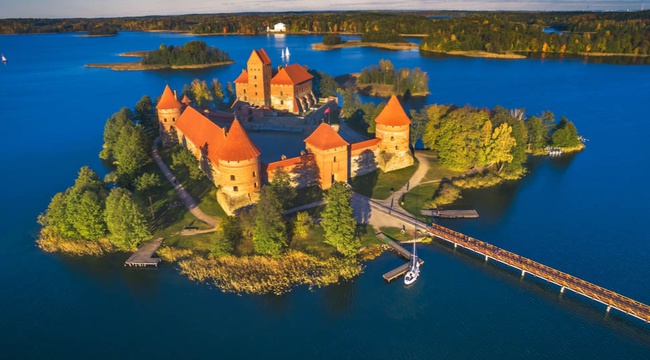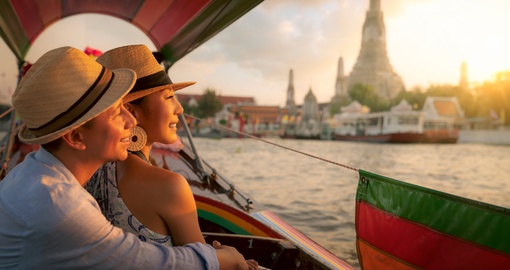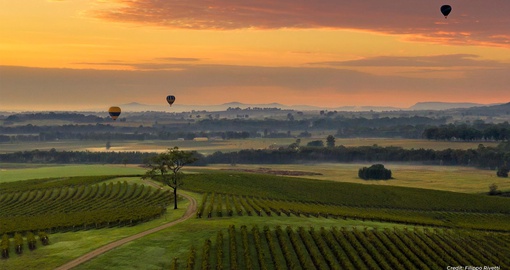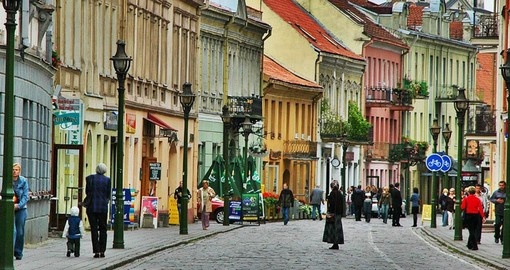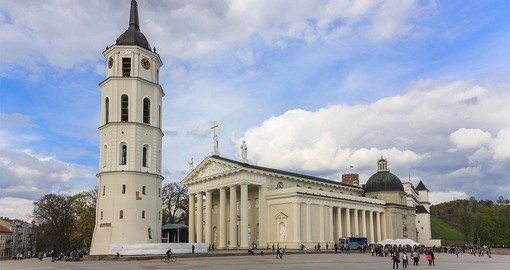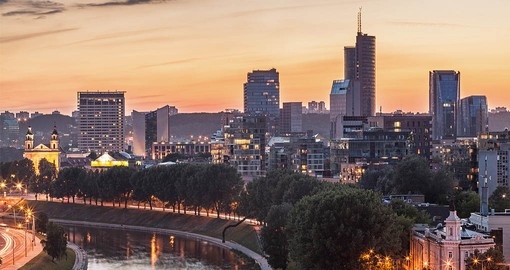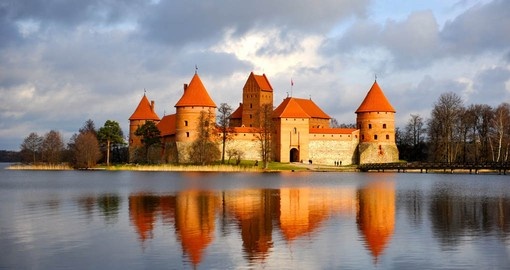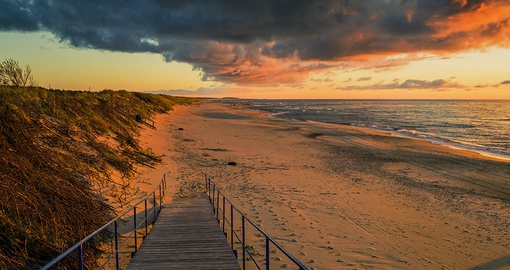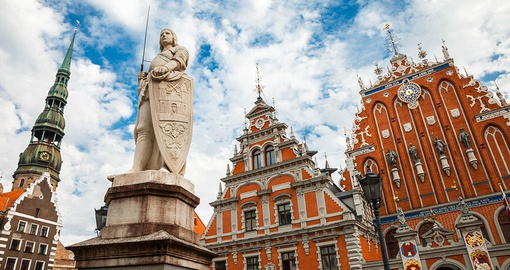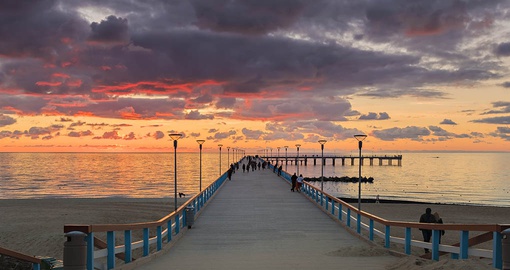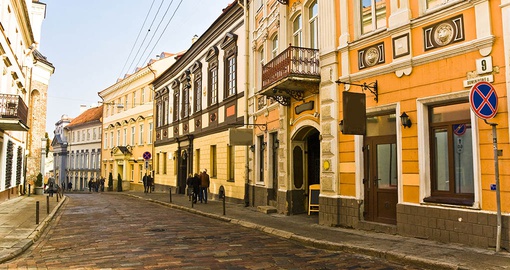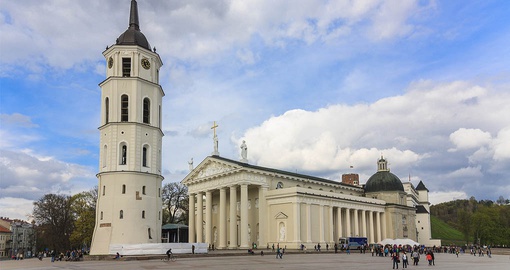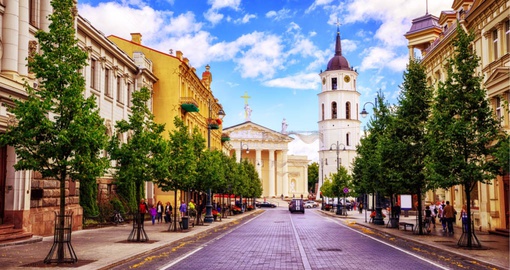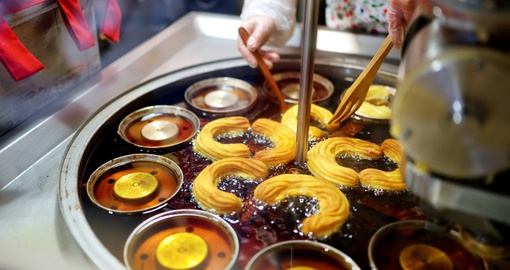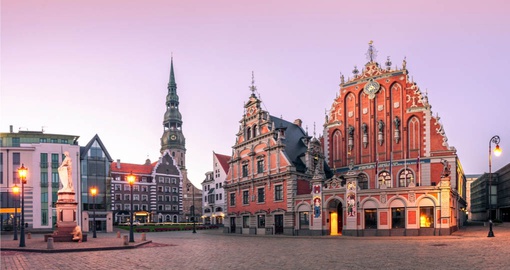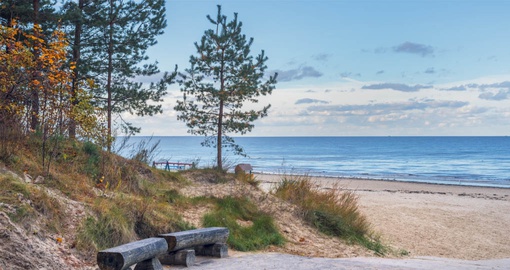Essential Facts
Currency
Lithuania adopted the Euro as its official currency in 2015, when the country joined the European Union. Visa and Mastercard are also commonly accepted at shops, restaurants and attractions. Obtain some Euro however at your local currency exchange before arriving in Lithuania as smaller stores or towns outside of the major cities may not accept credit cards.
Language
The official language in Lithuania is Lithuanian. A centuries-old language, it reflects the resiliency and unique identity of the country. Russian and Polish are also common holdovers from the Soviet Union period, and most Lithuanians born before 1980 are fluent in Russian. Today, English is the most popular foreign language to learn, spoken by about 30% of the total population and 80% of the youth.
Best Time To Go
It’s easy to say that the best time to travel to Lithuania is during the summer months of June to August, but winter has its own charms. Outdoor adventure enthusiasts can go skating on a frozen Lake Galve, or cross country skiing through the trails. Another Lithuanian tradition is to take a steam bath and then plunge into an ice hole that has been made into the lake. When spring and summer arrive, there is kayaking along the vilnia and Neris rivers, hot air balloon rides, music festivals, international sports events, and so much more, so Lithuania is a year round destination depending on your interests.
Climate
Winters, though beautiful, are cold and dark with temperatures well below freezing, and you will find the landscape to be snow covered usually from December to mid-March. Springtime is usually slow in starting, with April still being cold and damp with chances of snowfall. May is when the temperatures are more stable and temperate. Summer runs from June to August and the days are long and comfortable. Temperatures are usually around between 17-21 °C (64-70 °F) degrees on the coast and between 20-22 °C (70-73 °F) degrees inland. Summer can be rainy in Lithuania. Autumn goes by quickly in the country and by October, things start to get cold and rainy. The first signs of snow are usually in late October or early November.
Ideal Traveller
The ideal traveller to Lithuania is someone looking for a mix of history, art, and outdoor adventures. With Latvia and Estonia to the North, Belarus to the southeast and Poland to the southwest, it also serves as a great combination destination with neighbouring countries. It is for the modern traveller, looking for value for money, or with limited time. The essential sights can be enjoyed in just a few days.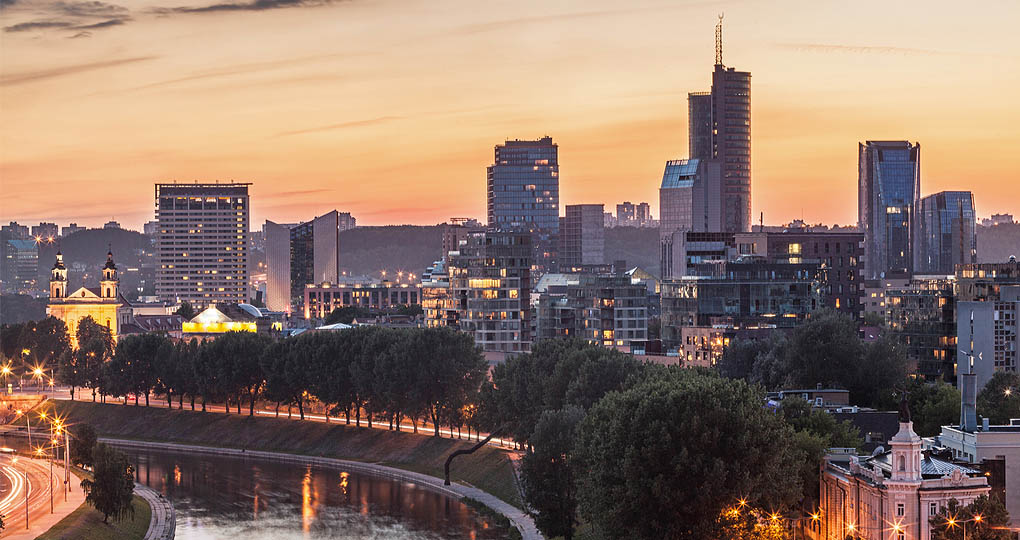
Getting There From North America
Major Airports
There are three airports in Lithuania. The largest airport is located in Vilnius and it is serviced by several international airlines. Kaunas Airport is a major hub for Ryanair and a few other regional carriers. The third airport is Palanga and it does offer several routes, but it is generally more expensive due to lower competition. Vilnius Airport has flights to 56 destinations in 28 countries, and is about 6 kilometers from the city center.
Recommended flight route from the United States
Flying to Vilnius from the United States involves connecting through a major city in Europe. You can fly from major US airports like New York JFK and EWR, Atlanta, Boston, Chicago, Los Angeles and Washington. The most prominent carriers include British Airways, Lufthansa, KLM, Air France.
Recommended flight route from Canada
Flying to Vilnius Lithuania from Canada involves connecting through a major city in Europe. You can fly from major Canadian airports like Toronto, Vancouver, Montreal, Ottawa and Calgary and, depending on the airline, connect through a major city in Europe. The largest airlines include Air Canada, Air France, Lufthansa, KLM and British Airways.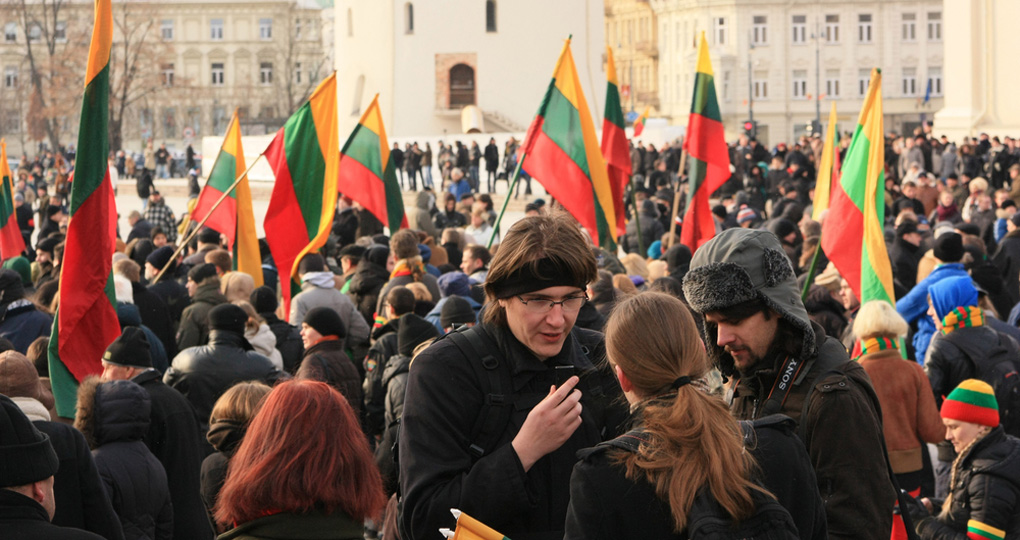
Essential Sights of Lithuania
Medieval Vilinius
Vilnius has played an integral part in the cultural and architectural development of Eastern Europe. Old Town Vilnius is one of the largest surviving medieval towns in Northern Europe. In the 15th century, the country was at the height of its power when Lithuania was the largest country in Europe. It is also home to Vilnius University which was founded in 1579 and is the oldest university in the Baltic States. In the summer, Vokieciu Street, revived after the Soviet occupation, comes alive with restaurants and cafes.
Trakai
The old capital of LIthuania, Trakai is a short distance from Vilnius (28 kilometers) and is one of the most visited spots in the country. Cross a 300m wooden bridge to Salos Castle, the only castle in Eastern Europe built on an island. The forests, lakes and village of this region make up Trakia National Park, one of Lithuania’s most popular and busiest recreation areas.
Druskininkai
Druskininkai has an odd claim to fame, Grutas Park, an attraction filled with monuments and statues from the Soviet Era. Unofficially known as Stalin World, the park brings to light the negative ideology of the Soviet Union and its impact on Lithuanian nation. The park has an outdoor sculpture trail taking you through monuments and statues including Lenin, Stalin and Marx. Controversial, though very interesting for those fascinated by Soviet history.
Kanaus
Kanaus is Lithuania’s second largest city. Among several city highlights, Pazaislis Monastery is a unique Italian Baroque structure considered to be one of the most extraordinary examples of this architecture style in Northern and Eastern Europe. The monastery was built in the 1600s and was the most important of the Camaldolese Monk order in Lithuania and Poland.
Klaipeda
Lithuania’s primary seaside destination and port-of-call, Klaipeda is a quaint city with an Old Town that features buildings largely influenced by Germanic architecture. Far less explored than many other Baltic destinations found on the water, like Tallinn or Riga, Klaipeda is an excellent retreat for guests seeking a quiet bit of downtime.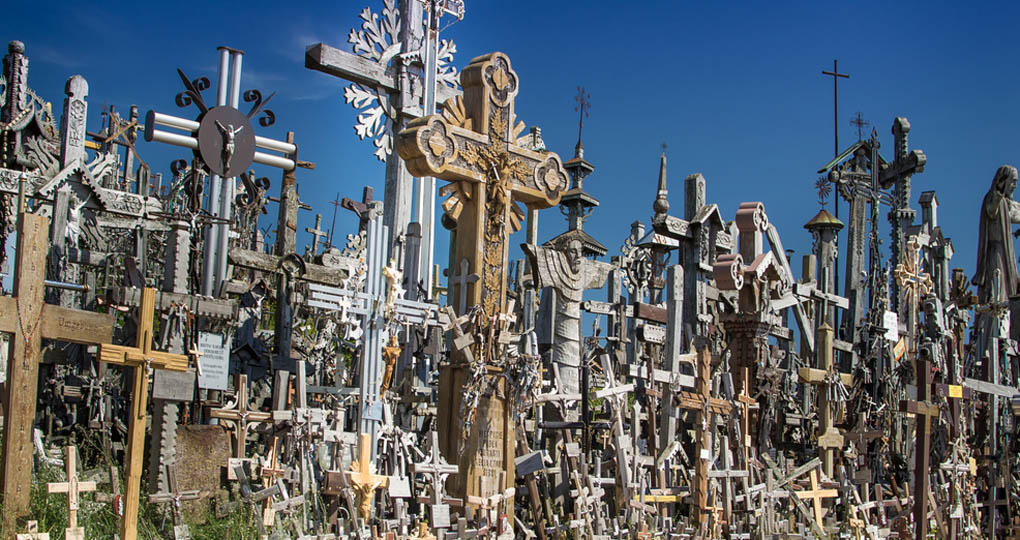
Other Highlights of Latvia Off the Beaten Path
The Curonian Spit
The Curonian Spit is a 98km sand dune peninsula dating back to prehistoric times and separates the Curonian Lagoon and the Baltic Sea. It is divided between Lithuania and Kaliningrad, Russia. Nearby, the small fishing village of Nida features traditional wooden houses, colourful facades, golden dunes and more. Shallow waters make it great for swimming, if you brave the chilly refreshing waters of the Baltic.
Siauliai
Siauliai is home to Kryziu Kalnas, or the Hill of Crosses. There are legends and fables on the history of the hill, telling the stories of family members mourning the victims of revolts that happened against the Russian regime in the 1800s. Cross making is an intangible cultural part of the Lithuanian heritage, and there are thousands of different types of crosses made from wood and metal on site.
Rumsiskes
Just outside of Kanaus, Rumsiskes offers an open-air museum where guests can learn about the lives and customs of Lithuanians. It takes the visitor on a journey that traces over 200 years of history and includes replica houses that represent different periods in history. Exhibits include national costumes, traditional toys, historic buildings, and religious artifacts. There is also an exhibit on the Exile and Resistance movement, a tragic period in the history of the country.
Uzupis
Uzupis used to be a part of Vilnius, known as the Jewish area of the city. In April 1997, the town became a micronation of 7000, with its own president and cabinet of ministers, as well as a constitution, flag and anthem. A thriving art community, it features a large number of galleries, street art and underground music venues. It is also known for its organic produce market. 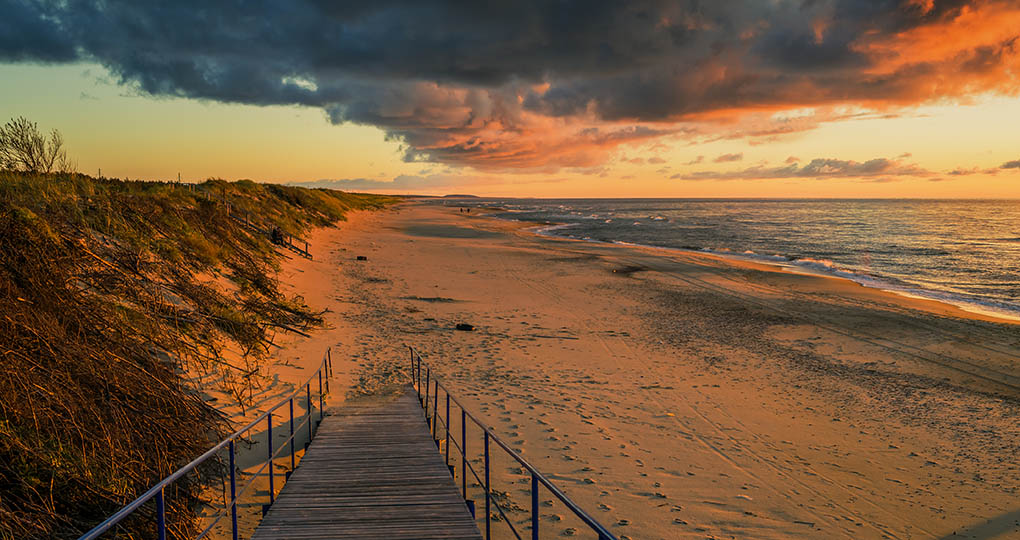
Top Activities and Experiences in Lithuania
Amber Museum
Amber is known as “Lithuanian Gold” and is the most popular souvenir from Lithuania. The gem, found in th Baltic Sea, has been cherished for centuries. It has been used to treat illness and pain as well as to protect against evil. The museum is located in the lower floor of the Tyszkiewicz Palace and is home to a large collection of about 30,000 exhibits.
Hot Air Balloon Rides
A hot air balloon ride over Vilnius takes you over the city’s church steeples and clay tile roofs. Get your camera ready for the beauty of the lakes and dense forests, and odd as it may sound, bring your passport, as the wind may take your balloon close to the border in Belarus!
Vilnius Choral Synagogue
The Choral Synagogue is the only remaining Synagogue in Vilnius, surviving WWII without serious damage. There were once over 100 houses of worship in the city of Vilnius and before WWII the city had the nickname “Jerusalem of the North.” This house of worship opened during the 1903 Jewish New Year. Prayers are conducted daily.
Atomic Bunker Museum
For those serious about WW2 history, the Atomic Bunker Museum in Kaunas is a must-see. The museum is situated in a bunker 6 metres underground. It is the only collection of its kind in the world and features more than 1,200 artifacts ranging from gas masks (for adults, children and horses), aviation security equipment, aircraft black boxes, civil defense medical devices and much more. The bunker is also home to the KGB Spy museum featuring surveillance equipment and so much more. For those interested in the Cold War, this museum is for you. 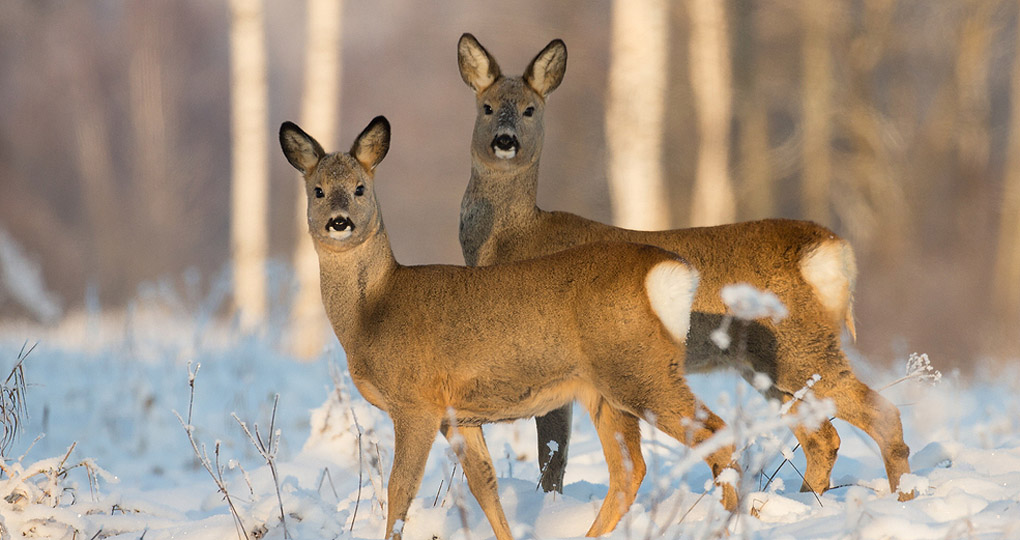
Essential Lithuanian Foods to Try
Cepelinai (Potato Dumplings)
The national dish of Lithuania is Cepelinai (potato dumplings). This dish is made with hearty ingredients of a potato dough, usually stuffed with pork with a sour cream sauce on top. They are typically the size of a small fist and hit the spot on a cold winter day. A hearty worker’s dish, it is now a staple at stalls and restaurants.
Saltibarsciai (Beetroot soup)
This cold beetroot soup (like borscht) consists of a creamy blend of pickled or boiled beetroots, buttermilk or tangy kefir, poured over grated cucumbers and hard boiled eggs, seasoned with a lot of dill. It is a cold soup and served most of the time in the summer.
Bulviniai Blynai (Potato Pancakes)
These potato pancakes belong traditionally to the Jewish culture. These are easy to make and fantastic to eat, consisting of grated potatoes, eggs and onions, fried until golden brown and crispy. In Jewish culture they are served during the holiday festival of Chanukah and toppings can vary traditionally between sour cream or apple sauce or jam.
Spurgos (Lithuanian Doughnuts)
Spurgos are bite sized doughnuts, with a personality of their own. They are a popular dessert treat that is served usually during Shrove Tuesday, known in the United States as Fat Tuesday. They are deep fried and filled with pastry cream mixed with poppy seeds. A similar snack exists in many cultures like Polish (Paczki), Croatian (Fritule) and Serbian (Krofne). 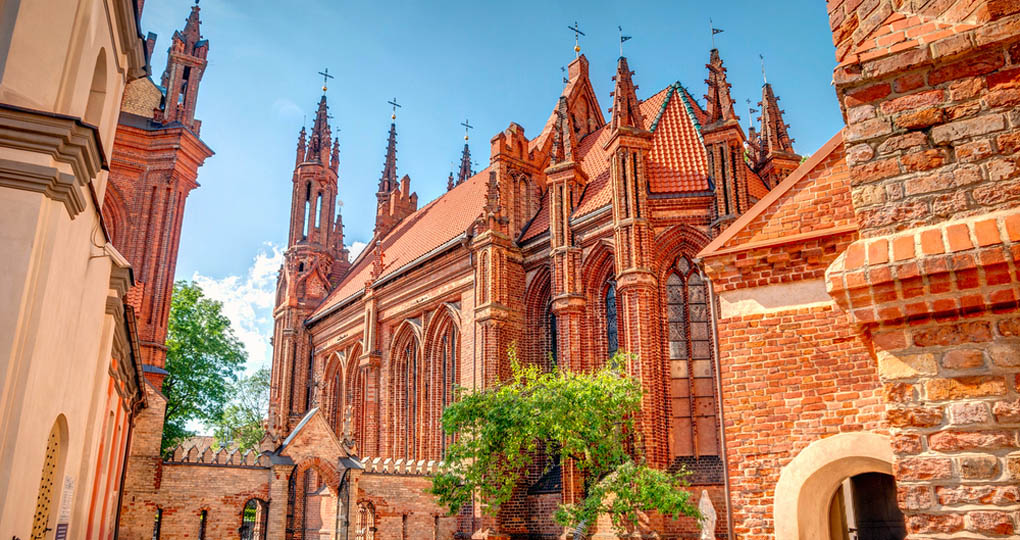
Most Popular Itineraries for Latvia
There are many different ways to get the full experience of Lithuania and the other Baltic State countries. For a short, locally immersive stay in the capital city of Vilnius, there is the Highlights of Vilnius, which will give you a taste of the historic capital city. Those seeking an extended stay to enjoy the landscapes might prefer the Vilnius, Curonian Spit and Riga Explorer itinerary. For those who would like to continue their discovery of the Baltic States, programs can be custom-built to suit your exact plans.
Tips for Sustainable Travel
Transportation within Vilnius is available on public buses and trams. Old Town Vilnius is one of the most walkable towns in Europe. Outside of the city centre, it is not as easy to get around and language can be a barrier. Either taking a tour or hiring a private guide is often the best way to see the country. Outside of scheduled tours, the growing tourism sector includes rural country homes, farms and lodges, all a growing part of sustainable tourism in the country.
Where to Go Next
The Baltic States are made up of Lithuania, Estonia and Latvia, all located on the eastern shores of the Baltic Sea. All gained their independence from the former Soviet Union and forged ahead with their own identities and development. They are closely connected historically, but with many unique differences. The easiest way to travel between them is on a tour or with a private guide. Lithuania has a network of four lane highways that connect the larger cities of Vilnius, Kaunas, Klaipeda and Palanga. On an escorted small group tour, it is possible that you could add Poland or Russia to the combination of Baltic States.
6 Aug 2020, 6:40 p.m.



